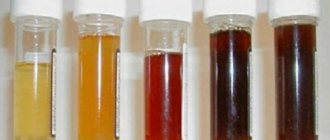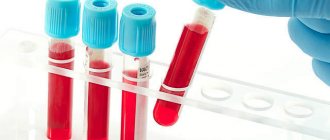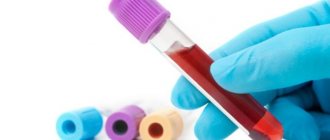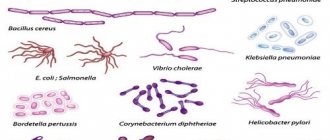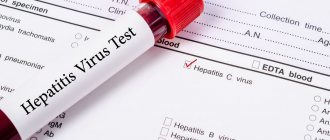DNA paternity testing is considered the gold standard by both the scientific and legal communities when it comes to accurately establishing the relationship between a possible father and a child. Legal paternity tests are accepted by the United States court system from coast to coast, as well as throughout the world. As one of the world's largest, most trusted and highly accredited providers of DNA testing services, the DNA Diagnostic Center (DDC) is eminently qualified to answer your questions and provide reliable information. So to help you make an informed decision, check out what you need to know about DNA paternity testing.
How to take a DNA test at home?
In practice, carry out independent collection of material for conducting a DNA test to confirm paternity. To do this, you need to perform the following steps:
- Preparatory stage for the parent. An adult should not eat, smoke or drink alcohol two hours before the test collection time. It is also prohibited to brush your teeth or use cosmetic or hygiene products. Medicines for treating the oral cavity. Immediately before the test, you need to rinse your mouth with plain water.
- Preparing for a child study. In addition to taking into account the basic rules, as for adult men, there are special requirements for newborns and infants. It is not allowed to take samples to establish paternity using DNA testing earlier than two hours after the next feeding. And if the baby has already started drinking water, then it is better to give him one or two spoons of liquid before the procedure.
- Collection of materials. Pharmacies sell special kits for genetically establishing or refuting paternity. They consist of cotton swabs and a special envelope for storing samples. If there are none, then you need to prepare six sticks in advance (three for each participant), two filled envelopes (full name, date of birth).
- Direct collection of materials for DNA paternity testing. From the inside of the cheek, use one half of the stick to apply several strokes (up to 20) with scrolling.
- Package. From each used stick, the part that was held by strangers (always wearing gloves) is carefully cut off, and the part with the genetic material is placed in a special envelope, which is immediately packed.
Particular attention must be paid to protecting the material from damage and deterioration. In practice, the following methods must be taken into account:
- it is mandatory for unauthorized persons to wear gloves;
- ban on the use of plastic bags;
- When packaging, it is forbidden to drool on the envelope.
Attention! There is DNA material in other samples as well. For example, blood, hair, nails.
Why is DNA tested?
Because everyone knows that this is a huge library with “instructions” for our lives: eye and hair color, nose shape and tendency to be overweight, craving for gambling and ability in mathematics.
The human genome contains 3.2 billion pairs of “letters”. All of them are packed into peculiar volumes - chromosomes. Humans most often have 23 pairs of chromosomes. More about the structure and biosynthesis of DNA
It seemed that if all the “letters” were deciphered, a unique tool would fall into the hands of humanity, allowing one to treat hereditary diseases, change harmful predispositions and get rid of mutations.
In 2003, scientists deciphered the entire human genome. It turned out that this is not enough to fully understand exactly how genes work, how they influence each other and the entire person as a whole. But, nevertheless, this allowed us to understand genes and their work much better.
We even learned to read genes from a DNA molecule - this is how genetic tests appeared.
Paternity through court: how to prove?
DNA paternity testing is most often carried out during a divorce (if the reason for the dissolution of the marital relationship was infidelity and mistrust) or immediately after receiving a certificate of termination of the marital union, when the legal guardian of minor children begins to claim alimony.
Determination of biological relationship occurs in court or privately. If research needs to be done only on the initiative of one party, and the other is categorically against it, then it is impossible to do without the participation of the court.
By law, judicial procedure means sending a petition to the district court located at the defendant’s residence address. Forced establishment of paternity occurs according to the following algorithm:
- filing a claim and appointing a judge;
- determining the date for the first consideration of the conflict and sending subpoenas to each participant;
- consideration of the evidence presented;
- purpose of the study;
- conducting an inspection and receiving the results by a judge;
- making a conclusion and making a final verdict.
Depending on the result of the paternity examination, it may be necessary to contact the registry office in order to obtain a new birth certificate for the child.
Genetic paternity testing cannot be carried out without the consent of the participants. On the one hand, he is a man, and on the other, he is the legal guardian of a minor child. If a man begins to refuse to undergo testing, then biological material cannot be taken from him for research.
In this case, the judge will determine the relationship based on the evidence presented. Therefore, the plaintiff should pay special attention to the accompanying package of documents.
You can prove the relationship between father and children without genetic testing by providing the following list of documents:
- a personal written explanation from the mother of the children with a detailed description of the circumstances of their acquaintance and living conditions together, as well as the events preceding the birth of the children;
- explanations of witnesses (relatives, neighbors, friends, representatives of state and municipal authorities);
- personal correspondence, audio recordings, videos, recordings of conversations;
- financial documents (for example, during pregnancy, what expenses the spouse made while supporting his wife).
DNA paternity testing can be carried out at the request of the following participants:
- husband;
- wife;
- judge.
At the initiative of the court, research will be done in the following cases:
- payment of alimony;
- change of country of residence;
- registration of inheritance after the death of the father, information about which was not provided in the birth certificate.
What is the procedure?
It is not always possible to conduct a DNA test on a voluntary basis. When one of the parties does not agree with the testing of genetic material, the basis will be a court decision made during the proceedings regarding the determination of the payer of alimony or when it is necessary to officially recognize the father.
There are many different ways to test a pair of an adult and a child. The collection of genetic material often occurs through:
- Scraping from the buccal mucosa.
- Analysis of salivary secretions.
However, other material – any tissue of the body or blood – can become a source of comparison and analysis. In most cases, no additional preparation is required from those tested, and the actions of doctors are absolutely safe and painless, unless we are talking about testing the fetus during pregnancy.
Description of how the procedure is carried out:
- Acceptance of samples in the laboratory.
- Conducting a comparative analysis with decoding.
- Preparation of a medical report with conclusions regarding the relationship of those tested.
Behind the simple description of the procedure, there are many legal details related to preparation for testing and the consequences of the established fact of kinship (if the conclusion is positive).
DNA contains many different genes, and comparisons are made by comparing individual sections of the molecule. The coincidence of 14 sites is a reason for recognizing the positive result of identifying kinship, allowing the interested party to further seek through the court certain legal norms related to the determination of paternity.
Not only mothers initiate the procedure in order to bring the biological parent to justice, sometimes fathers themselves want to know for sure whether the child is theirs, and testing during the period of gestation is common, i.e. even before he was born.
DNA during pregnancy
The development of medical technologies has led to the possibility of conducting genetic examinations without waiting for the birth of the baby.
Two methods have been developed and used during pregnancy:
- The non-invasive procedure does not involve any risk to the mother and fetus, involving blood sampling from a vein. It is carried out at any period of pregnancy, starting from the 7th week, when it becomes possible to isolate free DNA of the unborn child. Next, the biomaterial is taken from the putative father and matches or their absence in the compared areas are determined in the laboratory.
- The invasive method is more risky, as it involves collecting amniotic fluid in the period 14-20 weeks, or collecting material through a puncture in the period 9-12 weeks. Before deciding on such a method, parents should compare the degree of risk for the pregnancy and the feasibility of the procedure.
How much does DNA testing cost?
How much participants will have to spend to conduct the study depends on many factors. There is no single price set. The final cost of services depends on the following factors:
- the locality in which the medical center is located;
- name of the clinic;
- additional participation of the mother in the process;
- the kinship of how many people needs to be checked;
- who initiated the procedure;
- at what stage the examination should be carried out (after the birth of the baby, during the woman’s pregnancy);
- duration;
- biological materials that are provided for testing.
Where is the analysis done and how can it be done anonymously?
DNA testing is carried out by both government experts and private clinics.
To do a paternity test anonymously, just contact any laboratory that conducts paternity tests and pay for the test. In this case, the fact of testing and its results will be confidential. Modern private clinics highly value customer loyalty: by agreement, an envelope for sending materials and an expert opinion can be handed over at any place convenient for the client.
Who pays for DNA?
One of the following participants will pay for the services of the medical center:
- plaintiff, if the initiative comes from only one parent;
- the defendant, when the judge grants the claim and obliges the citizen to pay the legal costs in full;
- mom and dad split in half if this is a joint decision;
- state budget, when the judge himself demands to know the result.
Important! Regardless of the accompanying conditions, such a procedure cannot be carried out free of charge.
How to interpret the results of a genetic examination to establish paternity or maternity?
The conclusions of the genetic examination indicate the probability of paternity (maternity) and the paternity (maternity) index. The level of evidence of an expert study in the case of possible paternity (for a study involving mother, child and putative father) for the probability of paternity must be at least 99.90% and the paternity index must be at least 1000. For a duet child-putative father in the absence of another parent, the level of evidence of the expert opinion for the probability of paternity must be at least 99.75%, and the paternity index must be at least 400. The maximum probability of paternity is 99.998%. A negative result in any case is 100%. These indicator values are regulated by clause 84.11 of the Order of the Ministry of Health and Social Development of the Russian Federation No. 346n dated May 12, 2010 “On approval of the Procedure for organizing and conducting forensic medical examinations.”
The regulatory documents defining the procedure for conducting molecular genetic examinations in the Russian Federation are:
- Federal Law of May 31, 2001 No. 73-FZ “On State Forensic Expert Activities in the Russian Federation”;
- Order of the Ministry of Health and Social Development of the Russian Federation No. 346n dated May 12, 2010 “On approval of the Procedure for organizing and conducting forensic medical examinations”;
- Guidelines of the Ministry of Health of the Russian Federation No. 98/253 dated January 19, 1999 “Use of individualizing systems based on length polymorphism of amplified fragments (LPAP) of DNA in forensic medical examination of personal identification and establishment of kinship”;
- Guidelines of the Ministry of Health of the Russian Federation No. 2001/4 dated January 25, 2001 “Application of a molecular genetic individualizing system based on polymorphism of nucleotide sequences of mitochondrial DNA in forensic medical examination of personal identification and establishment of biological relationship”;
- Family Code of the Russian Federation. Chapter 10 “Establishing the origin of children.”
Is it possible to do DNA paternity testing during pregnancy?
It is extremely rare, but potential parents strive to receive results urgently, even before the birth of the baby. The couple will have to remember that a pregnant woman’s body reacts negatively to foreign influences, stress and additional loads, so if possible it is better to postpone the examination until later. If for some reason you need to apply for the procedure urgently, then you can start the study after reaching the ninth week of pregnancy.
You can donate biological samples in one of the following ways:
- Invasive test. Such a test implies that specialists take biological material from amniotic fluid, as well as blood from the umbilical cord, then comparing it with the blood of a potential dad. This procedure costs less, but there is a risk of infection of the intrauterine sac and an increased risk of miscarriage.
- Non-invasive. This method will cost more, but a sample of the baby's DNA material is taken from the mother's blood. Blood is taken from a vein and then compared with the results of the second parent.
Entertaining genetics
There is also a unique layer of “entertaining” genetic tests. Unfortunately, not all of them have a solid scientific basis.
Thus, some companies offer to determine the nationality of you and your ancestors using a genetic test. But we must remember that nationality is a set of social factors: language, religion, culture, identity. None of this is in the DNA. Such a test can only show where people with DNA similar to yours live today. This means, for example, if most of your ancestors left Russia for Italy, then the test will show that you come from southern Europe.
How long does it take to do a DNA test?
As noted above, the final price of the services will depend on the speed of the procedure. So, according to the general rule, the average duration is three weeks. This time is counted from the moment the biological materials are received. The expedited process can be completed in 3-5 days, but at a higher cost accordingly.
Important! No more than five days should pass from the moment of collecting the material to its transfer to the medical center, otherwise the samples will be unusable or the accuracy of the result will be significantly reduced.
DNA paternity test results
The results of the study are deciphered in percentage terms. So, if certain numbers indicate that the participants are relatives, then the probability of paternity will be 99.9%. This figure is due to the fact that if the father has twin brothers, their genetic sets will be almost identical. In the case of negative results, it is indicated that there is 100% no biological relationship.
In fact, it is possible to conduct the test anonymously, that is, an interested parent, living with his wife and child, can prepare biological materials and submit them to the clinic for testing. False information is provided on the names, and the response is provided through remote communication channels.
Decoding the results
A conclusion with test results is issued after the analysis. To decipher the results you do not need to have special knowledge. The expert opinion looks like this:
The conclusion states:
- surnames and first names of all study participants;
- dates of birth;
- race;
- date of sample collection and type;
- result (in short: there may be a blood relationship or not);
- more detailed interpretation of the results.
The detailed interpretation will indicate how many DNA segments were compared and the percentage of their matches. The conclusion is certified by the signature of the director and the seal of the clinic.
When deciphering the results, it is worth considering that medical clinics try to be as objective as possible.
The conclusion will read:
- If paternity is established: “biological paternity of (F.I.O.) in relation to (F.I.O.) cannot be excluded.” Next, the percentage of probability of paternity will be indicated. The maximum percentage of matches is 99.9%. One tenth of one percent is not excluded if the potential father has a twin brother.
- If the test result is negative: “(F.I.O.) cannot be the biological father of (F.I.O.).”
Accuracy of the study
A DNA test is the only method of testing paternity that is erroneous in a minimal number of cases. Moreover, it is accepted by the court as evidence.
A repeat test may be necessary when a mutation has occurred in the parent's germ cells. Then genes that neither parent has may appear in the baby’s DNA.
The only case in which a DNA test to establish paternity is useless is when the potential fathers are twins. The genetic profiles of twins are completely identical and it is impossible to determine the biological father among them.
In all other cases, there can be no error in the analysis results.
How to prepare for the test and carry out the procedure
To carry out the procedure, you will need to prepare in advance:
- sterile cotton swabs;
- scissors;
- two blank envelopes for the material of the man and the minor.
Eating, drinking and smoking are prohibited 2 hours before the procedure. Before the test, you will need to rinse your mouth with warm boiled water, without using dental floss, toothpaste, or a special rinsing solution.
Use a cotton swab to wipe the inner mucous membrane of the cheek, making 20 movements or more. Then the stick is cut with scissors. The part that was in contact with the mucous membrane is placed in an envelope. The latter will need to be signed indicating your full name.
The procedure is repeated 3 times so that each envelope contains at least 3 cotton swabs.
When collecting material, the following rules should be observed:
- touching the tip of the stick, which touched the mucous membrane of the cheek, is prohibited;
- You also cannot lick the envelope to seal it - you need to glue the edges with a special adhesive part, getting rid of the fabric strip;
- envelopes should not have polyethylene inserts - otherwise the taken material will deteriorate;
- You cannot pack envelopes in a file or plastic bag.
Instead of cotton swabs, it is allowed to provide:
- toothbrushes;
- nails;
- hair;
- cigarette butts;
- other objects containing the DNA of the desired person on their surface.
If, for example, a woman wants to determine the fact of paternity without telling a man about her plans, then she will be helped by the cutlery used by the possible father of the child, his clothes, underwear, razor, and napkins. For a reliable result, you must be completely sure that this item was not used by anyone other than a man.
Anonymity
Domestic legislation allows anonymous submission of material by parents. You can put any name on the form. The results of the anonymous test will be transmitted to the applicant by phone, e-mail, or mail.
If the test is carried out in connection with a case in court, then in this case it will not be possible to pass it anonymously. Such a conclusion has no legal force, and the court will not accept it for consideration.
To get acquainted with the test results, the applicant can independently contact representatives of the clinic by phone, indicating the contract number to the employee of the institution.




